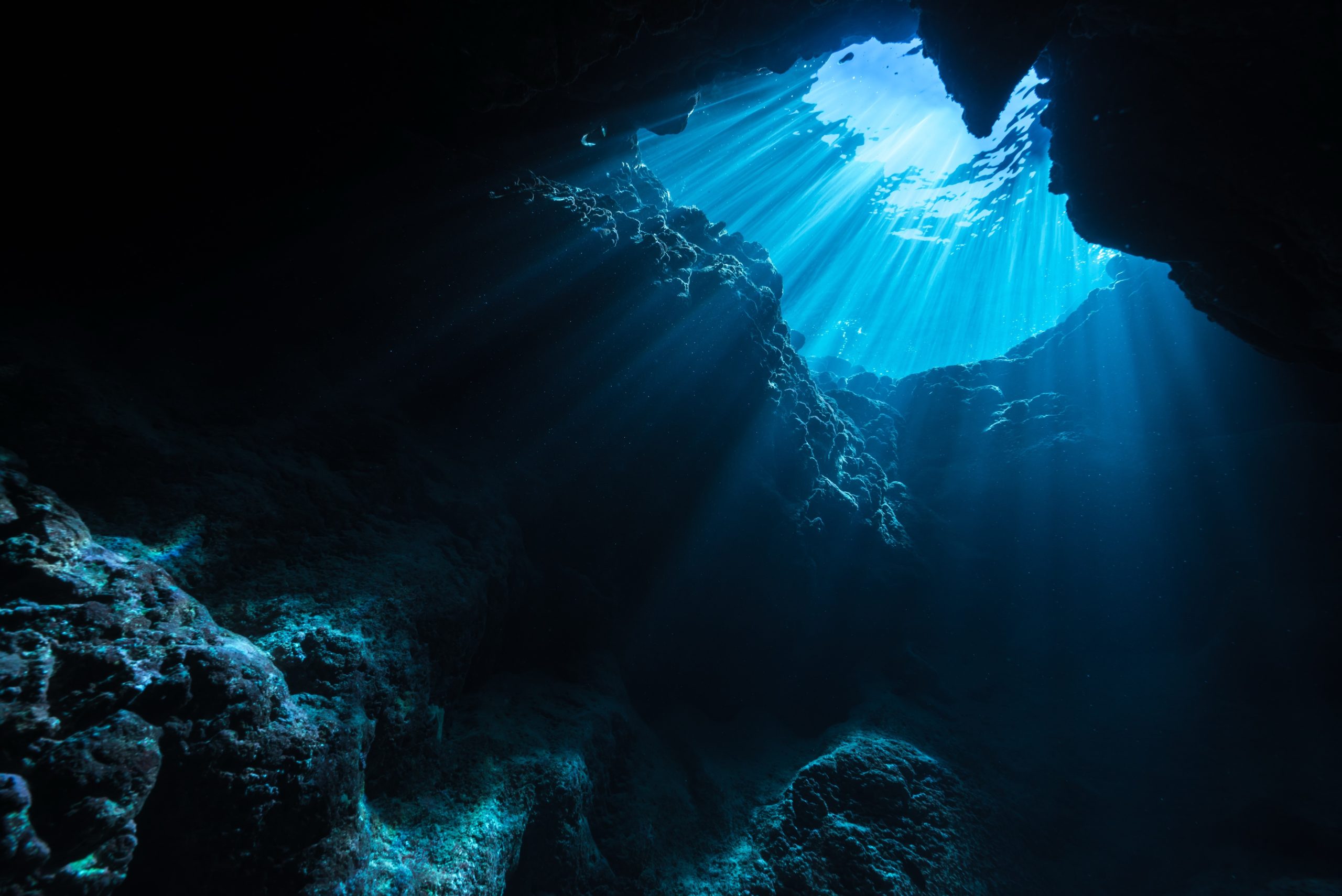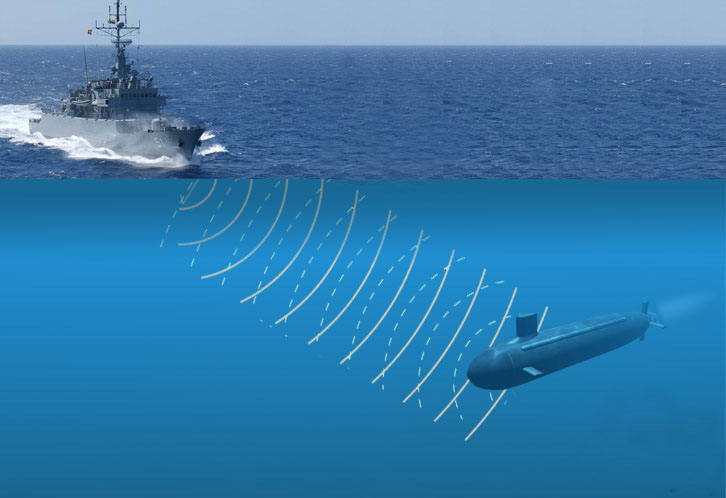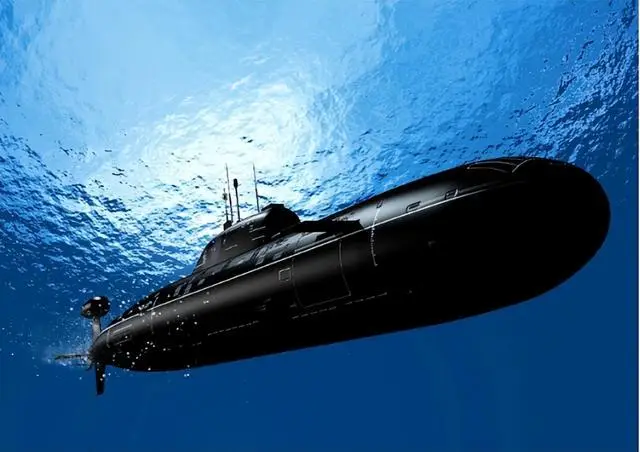The ocean’s depths remain one of humanity’s final frontiers, yet emerging technologies are revolutionizing how we explore these mysterious waters without human presence.
🌊 The Untapped Mystery Beneath Our Waves
More than 80% of Earth’s oceans remain unexplored and unmapped, representing a vast unknown territory larger than all continents combined. Traditional ocean exploration has always required human presence aboard vessels or in submersibles, limiting our reach due to physical constraints, costs, and safety concerns. However, we stand at the precipice of a transformative era where autonomous systems, artificial intelligence, and robotics are redefining what’s possible in marine research.
The shift toward human-free ocean exploration isn’t merely about convenience—it’s a necessity. Our oceans face unprecedented threats from climate change, pollution, and biodiversity loss, demanding comprehensive monitoring that human-dependent methods simply cannot provide at the required scale and frequency.
Revolutionary Technologies Transforming Marine Discovery
Autonomous Underwater Vehicles: The Silent Explorers 🤖
Autonomous Underwater Vehicles (AUVs) have emerged as the workhorses of modern ocean exploration. These self-navigating robots can operate for months without human intervention, diving to depths that would crush conventional submarines while collecting invaluable data. Unlike their remotely operated predecessors, AUVs make independent decisions based on pre-programmed missions and real-time environmental data.
The latest generation of AUVs incorporates machine learning algorithms that enable them to identify interesting geological formations, marine life, or unusual phenomena, adjusting their routes accordingly. This adaptive capability means that unexpected discoveries aren’t missed simply because they weren’t part of the original mission parameters.
Some advanced AUVs now feature swarm intelligence, allowing multiple units to coordinate their efforts without constant human oversight. This collective approach dramatically increases survey efficiency, with vehicles sharing data and dividing tasks based on optimal resource allocation algorithms.
Underwater Drones: Accessibility Meets Innovation
While professional AUVs cost millions, smaller underwater drones have democratized ocean exploration. These devices, some small enough to fit in a backpack, allow researchers, conservationists, and even citizen scientists to contribute to ocean knowledge. Equipped with high-definition cameras, sonar systems, and environmental sensors, these compact explorers can reach depths of several hundred meters.
The affordability and portability of underwater drones have catalyzed a new wave of marine documentation. Coral reef monitoring, fish population studies, and pollution tracking projects that were once prohibitively expensive can now be conducted by smaller organizations and academic institutions with limited budgets.
Artificial Intelligence: The Brain Behind Autonomous Exploration
Computer Vision in the Deep Blue
Artificial intelligence has become indispensable for processing the enormous volumes of visual data collected by autonomous systems. Modern AI algorithms can identify thousands of marine species, detect changes in coral health, spot pollution sources, and recognize geological features with accuracy that rivals or exceeds human experts.
Machine learning models trained on millions of underwater images can now perform real-time analysis, enabling autonomous vehicles to make intelligent decisions during missions. When an AI system spots a rare species or unusual formation, it can autonomously adjust camera angles, lighting, and proximity to capture optimal documentation without waiting for human instructions.
Predictive Analytics for Strategic Exploration
AI doesn’t just process what autonomous systems discover—it helps determine where to explore in the first place. By analyzing oceanographic data, historical findings, environmental conditions, and biological patterns, predictive models can identify locations with high probability of scientific interest.
This strategic approach maximizes the efficiency of autonomous missions, focusing limited resources on areas most likely to yield significant discoveries. Climate scientists use these predictions to position monitoring equipment where ocean changes are accelerating, while marine biologists deploy AUVs to locations where undiscovered species populations are statistically likely to exist.
🔬 Scientific Breakthroughs Enabled by Autonomous Systems
Mapping the Unknown Seafloor
The Seabed 2030 initiative aims to completely map the world’s ocean floor by 2030—an impossibly ambitious goal without autonomous technology. Fleets of AUVs equipped with multibeam sonar systems are systematically surveying vast oceanic regions, revealing underwater mountains, trenches, and geological formations never before documented.
These detailed maps aren’t merely academic curiosities. They’re essential for understanding ocean currents, predicting tsunami behavior, identifying potential mineral resources, planning undersea cable routes, and establishing marine protected areas based on actual ecosystem boundaries rather than arbitrary lines.
Continuous Climate Monitoring
Climate change’s impact on oceans requires constant monitoring across all depths and regions. Autonomous platforms like Argo floats drift with ocean currents, periodically diving to measure temperature, salinity, and chemical composition before surfacing to transmit data via satellite. This global network of over 4,000 robotic floats provides unprecedented insight into ocean health.
Long-duration AUVs now patrol specific regions for months, tracking subtle changes in water chemistry that indicate acidification, monitoring temperature variations that affect marine ecosystems, and detecting early signs of phenomena like El Niño events. This continuous presence is impossible with human-crewed vessels, which must return to port for supplies and crew changes.
Discovering New Species and Ecosystems
The deep ocean harbors millions of undiscovered species living in extreme conditions. Autonomous vehicles designed to withstand crushing pressures and near-freezing temperatures are documenting life forms that challenge our understanding of biology. From thermal vent communities to bioluminescent organisms in the midnight zone, these discoveries reshape our knowledge of life’s possibilities.
In 2023 alone, autonomous exploration vehicles documented over 5,000 potentially new species in deep-sea regions. Many of these organisms possess unique biochemical adaptations that could inspire medical breakthroughs, biomimetic engineering solutions, or new materials science applications.
Environmental Protection Through Automated Vigilance 🛡️
Combating Illegal Fishing and Poaching
Vast ocean territories make enforcement of fishing regulations nearly impossible through conventional patrols. Autonomous systems equipped with acoustic sensors can detect vessel engines, identify fishing activities, and even distinguish between legal and illegal practices based on location, season, and method.
These systems operate continuously without the operational costs of patrol boats or aircraft, creating a persistent monitoring presence that deters violations. When suspicious activity is detected, authorities receive immediate alerts with precise coordinates, enabling rapid response.
Tracking Pollution and Plastic Accumulation
Ocean pollution, particularly plastic waste, represents one of our most pressing environmental crises. Autonomous vehicles equipped with specialized sensors can detect microplastic concentrations, track pollution plumes back to their sources, and monitor the effectiveness of cleanup efforts.
Surface drones and gliders continuously patrol garbage patches, collecting data on plastic density, composition, and movement patterns. This information helps scientists understand how ocean currents transport pollution and where intervention efforts will be most effective.
Coral Reef Health Assessment
Coral reefs face existential threats from warming waters, ocean acidification, and pollution. Autonomous monitoring systems provide the consistent, long-term observation necessary to track coral health, identify bleaching events early, and measure recovery rates after disturbances.
AI-powered image analysis can assess coral coverage, species diversity, and health indicators across vast reef systems, detecting subtle changes that human observers might miss. This early warning capability allows conservationists to implement protective measures before damage becomes irreversible.
Commercial Applications Driving Innovation 💼
Offshore Energy Infrastructure Inspection
The offshore energy sector has enthusiastically adopted autonomous underwater inspection vehicles. Oil platforms, wind farms, and subsea pipelines require regular inspections for safety and maintenance, tasks traditionally performed by human divers at significant risk and expense.
Autonomous inspection vehicles equipped with cameras, sonar, and sensors can examine structures in detail, identify corrosion, detect leaks, and assess structural integrity without exposing human workers to dangerous underwater conditions. These systems operate around the clock regardless of weather, dramatically reducing inspection costs while improving safety.
Underwater Mining Exploration
As terrestrial mineral resources become scarcer, interest in deep-sea mining grows. Autonomous vehicles survey potential mining sites, mapping mineral deposits and assessing extraction feasibility. While environmental concerns surround this industry, autonomous systems also monitor ecological impacts, providing data essential for sustainable practices.
Telecommunications and Power Cable Management
Thousands of undersea cables carry internet traffic and electrical power between continents. When these cables fail, autonomous vehicles locate breaks and assist in repairs far faster than traditional methods. Some advanced systems can even perform simple repairs autonomously, restoring critical infrastructure with minimal delay.
🚀 Emerging Technologies on the Horizon
Bioinspired Robotics
Engineers are developing ocean exploration robots that mimic marine life, achieving unprecedented efficiency and maneuverability. Robotic fish that swim like tuna can cover vast distances on minimal energy, while jellyfish-inspired vehicles drift silently through sensitive ecosystems without disturbance.
These biomimetic designs don’t just improve performance—they allow robots to blend into marine environments, observing wildlife behavior without the disturbance caused by traditional mechanical vehicles. This unobtrusive presence yields more authentic behavioral data and reduces stress on studied populations.
Quantum Sensing for Unprecedented Detection
Quantum sensors represent the next frontier in underwater detection technology. These devices can detect minute magnetic field variations, enabling discovery of buried shipwrecks, geological structures, or even migrating marine animals based on their bioelectric signatures.
Quantum gravity sensors can map seafloor density variations with extraordinary precision, revealing subsurface geological features invisible to conventional sonar. As these technologies mature and become more compact, they’ll unlock entirely new dimensions of ocean exploration.
Swarm Robotics and Collective Intelligence
Future ocean exploration will likely involve coordinated swarms of hundreds or thousands of small autonomous units working together. Like schools of fish or flocks of birds, these robot swarms will exhibit collective behaviors greater than the sum of individual capabilities.
Swarm systems could simultaneously survey enormous ocean areas, dynamically adjusting their formation based on discoveries or environmental conditions. Individual units could specialize in different tasks—mapping, sampling, imaging, or analysis—while sharing information in real-time through underwater communication networks.
Overcoming Challenges in Autonomous Marine Technology ⚡
Power and Endurance Limitations
Energy remains a critical constraint for autonomous underwater vehicles. Battery technology advances, but ocean missions still face duration limits. Researchers are developing innovative solutions including wave-powered generators, thermal energy converters that exploit temperature differences between water layers, and biofuel cells that extract energy from organic matter.
Some experimental vehicles harvest energy from their environment through multiple methods simultaneously, extending mission durations from days to months or even years. This extended endurance is essential for long-term monitoring programs and exploration of remote oceanic regions.
Communication in the Underwater Environment
Radio waves that enable terrestrial communications barely penetrate water. Underwater communication relies primarily on acoustic signals, which travel slowly and carry limited bandwidth. This communication challenge complicates real-time control and data transmission from autonomous vehicles.
Emerging solutions include optical communication using laser pulses through water, quantum communication networks, and autonomous decision-making systems that reduce the need for constant communication. Some vehicles surface periodically to transmit data via satellite, balancing communication needs with mission efficiency.
Navigation Without GPS
GPS signals don’t reach underwater, forcing autonomous vehicles to navigate using alternative methods. Inertial navigation systems, acoustic beacons, terrain-matching algorithms, and dead reckoning all contribute to underwater positioning, but accuracy degrades during long missions.
Advanced navigation systems now combine multiple techniques, using AI to compensate for individual method limitations. Seafloor mapping data enables terrain-relative navigation, where vehicles match sonar readings to known bathymetric maps, correcting positional drift much like visual landmarks guide human travelers.
🌐 Global Collaboration and Data Sharing
Open-Source Ocean Data Initiatives
The true potential of autonomous ocean exploration is realized through data sharing. International initiatives encourage researchers to contribute their findings to open databases accessible to scientists worldwide. This collaborative approach accelerates discovery and prevents redundant efforts.
Standardized data formats and protocols ensure that information from different autonomous systems remains compatible and comparable. Machine learning models trained on these massive datasets become more accurate, benefiting all users regardless of their individual resources.
Crowdsourced Analysis and Citizen Science
The volume of data collected by autonomous systems exceeds what professional scientists can analyze. Crowdsourced platforms invite volunteers to examine images, identify species, or mark interesting features. This distributed analysis harnesses collective human intelligence while engaging public interest in ocean science.
Educational institutions integrate ocean exploration data into curricula, allowing students to work with real scientific information. This connection between autonomous technology and education inspires the next generation of marine scientists and engineers.
Ethical Considerations and Environmental Responsibility 🌿
Minimizing Technological Footprint
As we deploy more autonomous systems in the ocean, we must consider their environmental impact. Collisions with marine life, noise pollution from propulsion systems, and lost or abandoned equipment all pose risks. Responsible development prioritizes biodegradable materials, quiet operation, and recovery protocols.
Designers increasingly consider end-of-life scenarios, ensuring vehicles can be recovered or will degrade harmlessly if lost. Some experimental systems use materials that dissolve safely after mission completion, leaving no permanent trace in marine ecosystems.
Balancing Exploration with Preservation
Not all ocean areas should necessarily be explored or exploited. Indigenous communities, environmental groups, and ethicists argue that some pristine environments deserve protection from all human interference, including autonomous technology. This debate highlights tensions between scientific curiosity, economic interests, and preservation philosophy.
Establishing guidelines for responsible autonomous exploration requires input from diverse stakeholders, balancing knowledge advancement with ecosystem protection. Some propose designating certain regions as technology-free zones, marine equivalents of wilderness areas where nature remains undisturbed.
The Dawn of a New Exploration Era 🌅
Human-free ocean exploration represents more than technological achievement—it’s a fundamental shift in humanity’s relationship with the marine environment. Where once we ventured personally into the depths at great risk and expense, we now deploy intelligent machines that extend our senses and capabilities beyond biological limitations.
This transition doesn’t diminish human importance; rather, it amplifies our capacity to understand and protect the oceans upon which all life depends. Scientists can now ask questions impossible to answer through traditional methods, monitoring ocean systems continuously across vast scales of time and space.
The data flowing from thousands of autonomous systems reveals patterns and connections previously invisible, transforming our understanding of ocean circulation, ecosystem dynamics, and climate interactions. Each discovery raises new questions, driving innovation in sensor technology, artificial intelligence, and robotic design.
As autonomous systems become more capable and affordable, ocean exploration democratizes. Institutions and individuals previously excluded by high costs can now participate in marine discovery. This broadened participation brings diverse perspectives and priorities, enriching the scientific enterprise and strengthening advocacy for ocean protection.
The future promises even more remarkable capabilities. Autonomous systems that repair themselves, vehicles that operate for years without maintenance, swarms that adapt collectively to unexpected situations, and AI that formulates its own research hypotheses based on accumulating data. These advances will unveil ocean secrets hidden since Earth’s formation.
Yet technology alone cannot save our oceans. The knowledge gained through autonomous exploration must inform policy decisions, conservation strategies, and individual actions. The same systems documenting undiscovered species also witness ecosystem degradation, providing undeniable evidence of human impact that demands response.
Human-free ocean exploration ultimately serves human needs—understanding our planet’s life support systems, discovering resources sustainably, protecting biodiversity, and satisfying the innate curiosity that drives all scientific endeavor. By unleashing autonomous technology’s potential, we gain tools adequate to the enormous challenges facing marine environments in the 21st century.
The ocean’s future depends on choices we make today about exploration technologies, environmental protection, and international cooperation. Autonomous systems offer unprecedented capabilities for understanding and safeguarding marine ecosystems, but realizing this potential requires commitment to responsible development and application. The depths await our machines, and through their electronic eyes, we’ll finally comprehend the blue planet we call home.
Toni Santos is a visual storyteller and educational ethnographer whose work celebrates the fluid knowledge systems of nomadic cultures. Through art and research, Toni brings attention to how learning has thrived outside traditional institutions—rooted in movement, oral tradition, and deep connection to land and community.
Guided by a passion for ancestral wisdom, adaptive pedagogy, and cultural resilience, Toni explores the tools, rituals, and environments that once shaped the minds of travelers, herders, and migrating communities. Whether illustrating storytelling circles beneath open skies, wearable mnemonic devices, or maps woven into textiles, Toni’s work honors learning as a lived, sensory, and communal experience.
With a background in visual anthropology and intercultural design, Toni reconstructs the educational models of mobile societies through images and narratives that restore their dignity and relevance in today’s world.
As the creative mind behind Vizovex, Toni shares a rich tapestry of visual essays, artifact-inspired art, and curated stories that reveal the genius of teaching and learning on the move.
His work is a tribute to:
The wisdom of learning through journey, rhythm, and story
The spatial and environmental intelligence of nomadic cultures
The power of intergenerational knowledge passed outside walls
Whether you’re an educator, researcher, or lifelong learner, Toni invites you to step into a world where education is not confined, but carried—one step, one song, one shared insight at a time.





